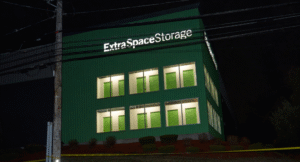
North Korea has launched its first operational “tactical nuclear attack submarine” and assigned it to the fleet that patrols the waters between the Korean peninsula and Japan, state media said on Friday.
Submarine No. 841 – named Hero Kim Kun Ok after a North Korean historical figure – will be one of the main “underwater offensive means of the naval force” of North Korea, leader Kim Jong Un said at the launch ceremony on Wednesday.
Analysts said the vessel appears to be a modified Soviet-era Romeo-class submarine, which North Korea acquired from China in the 1970s and began producing domestically. Its design, with 10 launch tube hatches, showed it was most likely armed with ballistic missiles and cruise missiles, analysts said.
But such weapons won’t add much value to the North’s more robust land-based nuclear forces, because the aging submarines used as the core of the new design are relatively noisy, slow and have limited range, meaning they may not survive as long during a war, said Vann Van Diepen, a former U.S. government weapons expert who works with the 38 North project in Washington.
“When this thing is field deployed, it’s going to be quite vulnerable to allied anti-submarine warfare,” he said. “So I think from a sort of hard-headed military standpoint this doesn’t make a lot of sense.”
South Korea’s military said that the submarine didn’t appear ready for normal operations, and that there were signs North Korea was attempting to exaggerate its capabilities.
Shin Seung-ki, research Fellow at Korea Institute for Defense Analyses (KIDA), cautioned that South Korea and the United States cannot be guaranteed to detect and destroy submerged submarines.
“It is evident that North Korea has significantly expanded and strengthened the operational capabilities of its naval forces compared to before,” he said.
At the launch ceremony, Kim said arming the navy with nuclear weapons was an urgent task and promised more underwater and surface vessels equipped with tactical nuclear weapons for the naval forces, news agency KCNA reported.
“The submarine-launching ceremony heralded the beginning of a new chapter for bolstering up the naval force of the DPRK,” KCNA said, using the initials of the North’s official name, the Democratic People’s Republic of Korea.
North Korea plans to turn other existing submarines into nuclear armed vessels, and accelerate its push to eventually build nuclear-powered submarines, Kim said.
“Achieving a rapid development of our naval forces … is a priority that cannot be delayed given … the enemies’ recent aggressive moves and military acts,” the North Korean leader said in a speech, apparently referring to the United States and South Korea.
North Korea’s nuclear weapons and ballistic missile programs are banned by United Nations Security Council resolutions, and the submarine launch drew condemnation from South Korea and Japan.
“North Korea’s military activity is posing graver and more imminent threat to our country’s security than before,” Japanese Chief Cabinet Secretary Hirokazu Matsuno told a briefing.
The designation as a “tactical” submarine suggests it does not carry submarine launched ballistic missiles (SLBM) that can reach the U.S. mainland, but rather smaller, short-range SLBMs or submarine-launched cruise missiles (SLCM) capable of striking South Korea, Japan, or other regional targets, said Choi Il, a retired South Korean submarine captain.
The rear of the submarine’s sail – the tower that juts out of the top of the hull – was expanded and 10 vertical launch tubes, 4 large and 6 small, were installed, likely for SLBMs and SLCMs, he said.
North Korea has test-fired both SLBMs and SLCMs.
Shin said it can take a year or more to evaluate a new vessel at sea, so immediate deployment may be limited.
It is unclear whether North Korea has fully developed the miniaturised nuclear warheads needed for such missiles. Analysts say that perfecting smaller warheads would most likely be a key goal if the North resumes nuclear testing.
North Korea has about 20 Romeo-class submarines, which are powered by diesel-electric engines and are obsolete by modern standards, with most other countries operating them only as training vessels.
Analysts first spotted signs that at least one new submarine was being built in 2016, and in 2019 state media showed Kim inspecting a previously unreported submarine built under “his special attention” that would operate off the east coast.
North Korea has a large submarine fleet but only the experimental ballistic missile submarine 8.24 Yongung (August 24th Hero) is known to have fired a missile.
The launching ceremony comes as North Korea is set to mark the 75th anniversary of its founding day on Saturday and follows reports that Kim plans to travel to Russia this month to meet President Vladimir Putin to discuss weapons supplies to Moscow.
South Korean President Yoon Suk Yeol on Thursday met with Chinese Premier Li Qiang in Jakarta, and asked Beijing to do more as a U.N. Security Council member to address North Korea’s nuclear threat.






